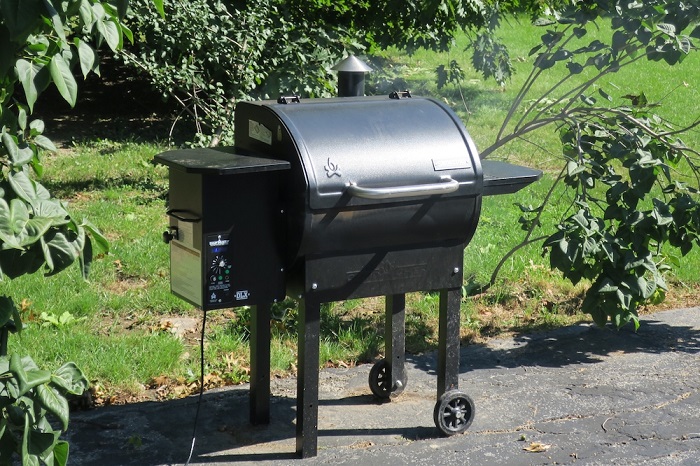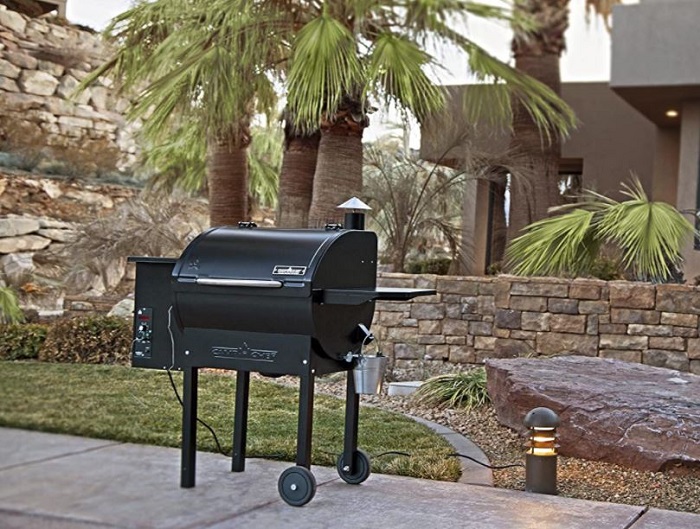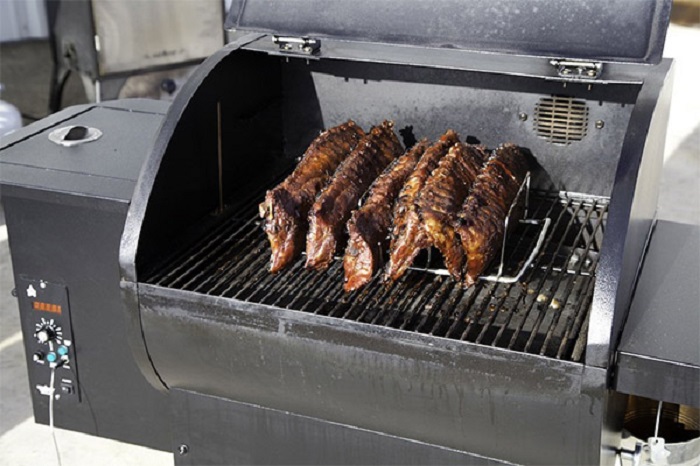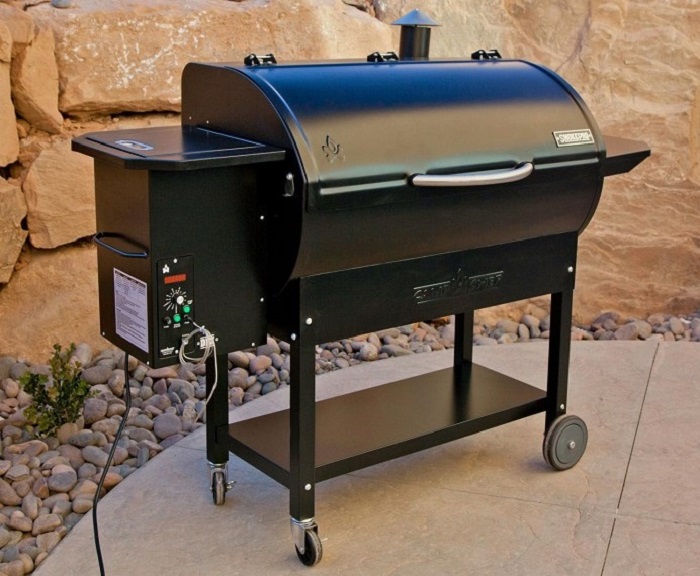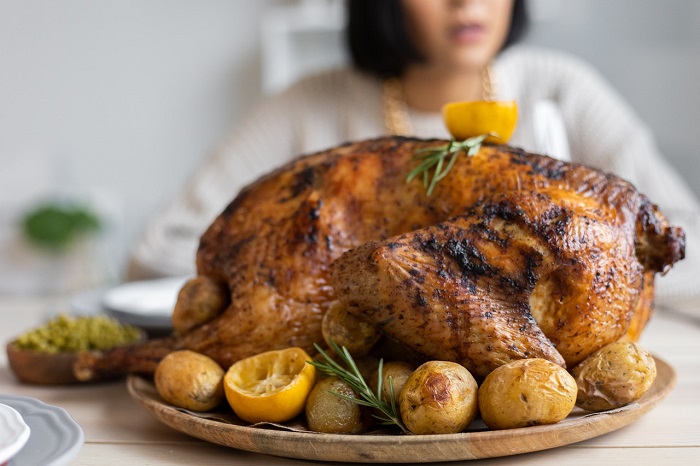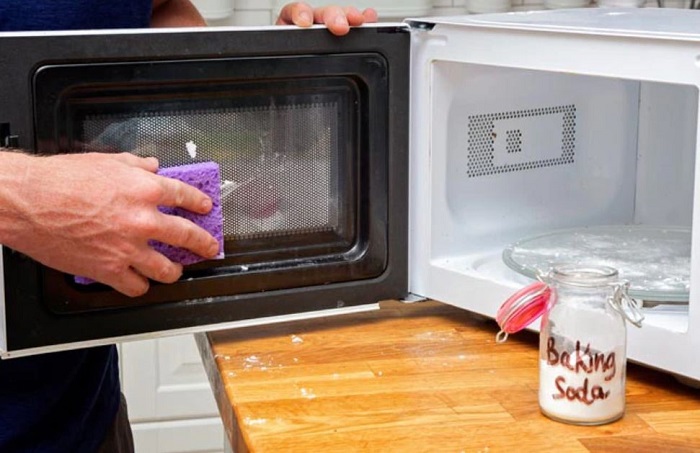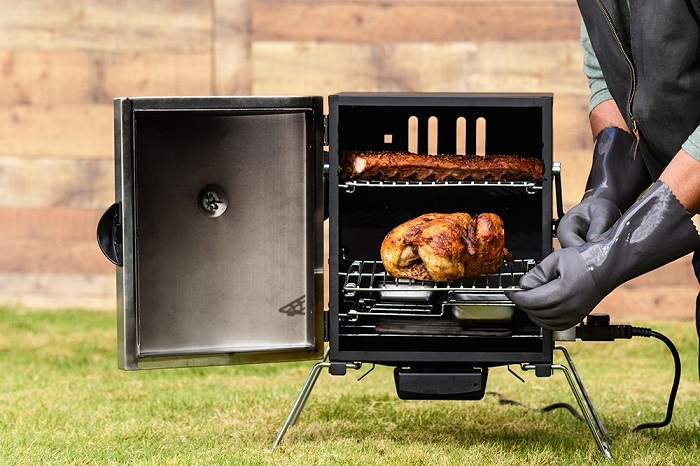How Does a Pellet Grill Work? Good Tips and Guides in 2023
Pellet grills are a great way to enjoy amazing smoked flavor and juicy meats in the comfort of your own backyard. Pellet grills work by using a hopper that is filled with wood pellets, which will then be heated up and burnt down until they turn into ash. The ash creates an intense heat for cooking your food, while also providing the necessary smoke flavoring.
This means you get delicious barbecue flavors without having to deal with tedious charcoal or gas setups! In this article, we will show How Does a Pellet Grill Work? Besides that, we provide some tips and guides on Using Pellet Grill. Read on!
1. What is Pellet Grill?
A Pellet Grill is an electric powered smoker that normally uses small compressed pieces of hardwood refills known as pellets to generate heat and smoke inside the oven which cooks food slowly at around 240°F – 260°F (these temperatures may vary slightly depending on what type of smoker you choose).
There’s no direct flame or charcoal burned during the cooking process – instead, temperature increases happen by means of convection – hot air gets sent into the grill and heats up everything inside it.
2. A Brief History of Pellet Grills.
The first ever pellet grill was made during the 1990’s by a company named Traeger as a solution to the challenge of cooking great tasting food with traditional smokers, which is often difficult to do because of bad weather or ash caused problems.
This type of smoker uses an electric heating element with fan forced air flow that cooks and smokes food in its own juices – making it possible for you to enjoy your favorite foods like beef brisket or smoked cheese with better flavor and taste than ever before!
A pellet grill has since then rapidly become one of the most popular choices amongst barbecue enthusiasts – simply because they make such tasty food, both hot and cold, for you to enjoy.
3. How Does a Pellet Grill Work?
A pellet grill functions similarly to a standard outdoor propane or charcoal barbecue; by burning wood pellets filled with degradable organic material (such as hardwood dust and sawdust) instead of relying on lighter fluid, gas canisters or propane tanks.
The working procedure involves heating up the digital control unit – thermostat and timer typically found in most pellet grills – which will then cause an auger to go into action, feeding wood pellets from the hopper into the fire pot that gets hotter as it works.
This process will continue until you turn off the heat source at the digital control unit, at which point all your pellets will be burnt out. As those burn out, more fresh ones are brought up from below to take their place – a process that takes about 20 minutes in total.
4. What to Consider When Buying a Pellet Smoker?
If you are looking to buy a great smoker, consider considerations including:
Price:
Barbecue smokers can range in cost from under $100 for small tabletop grillers all the way up to thousands of dollars for serious high-duty competition models or specialized outdoor cooking rigs that use natural gas or propane tanks.
Capacity:
How many people will you usually be cooking for at once? Will it just be yourself and your significant other, or are you planning on having parties with friends where everyone is invited?
Keep in mind that pellet grills cook food more slowly than standard outdoor propane grills, so the larger your group is, the bigger smoker you may need. You also want to make sure you have enough space inside the grill for your food.
Ease of Use:
You will definitely want to think about how often you plan on using your smoker, and also which features are essential to you. Some smokers have advanced technology like digital thermostats and automatic pellet feeders which allow the user to set the smoker up so that it can work on its own without requiring constant supervision – just set it and forget it!
And if you’re smoking meat for guests, you’ll probably want one with a high capacity ash catcher, removable grates or racks, adjustable temperature levels (which automatically maintain the correct cooking temperature), handles that stay cool during use, and drip pans for easy cleanup.
5. Steps by Steps on How to Use a Pellet Grill?
Now that you know what to look out for, the following steps will guide you on how to use your new pellet grill:
5.1. Plug In Your Smoker To a Power Source.
5.2. As with any appliance, before using it for the first time, always plug it in and check if it is working correctly by viewing pellets being fed from the hopper into the firepot as well as checking whether smoke is coming out of the grill’s main body. If there are no problems so far, continue reading.
5.3. Season Your Pellet Grill Once plugged in, season your smoker by applying a thin layer of vegetable oil or olive oil onto its cooking grates – this step prevents food from sticking the metal grates when cooked and enhances the grill’s performance.
5.4. Fill Water Trays and Load Pellets into the Hopper.
Fill water trays at the bottom of your smoker, beneath where you place your grill grates – this will prevent excess heat from damaging your smoker’s body, as well as providing humidity that will help with food tenderness. You can also load pellets into your hopper for storage until they are required to be used.
Steel wood pellets work best when kept dry before use – hence, never leave them out of their box unless there is a fire burning inside.
5.5. Heat Up Your Smoker And Then Start Cooking! Turn on the pellet cooker by flipping its power switch to “On” or “High” – some models also require the manual use of a pushbutton or igniter to start heating coils.
After you hear your smoker’s fan and auger motor running, check your smoker thermometer to ensure that the internal temperature has reached at least 150 degrees Fahrenheit (65 degrees Celsius).
Prepare Your Smoker’s Grill Grates After this, rub vegetable oil onto grill grates using tongs and a paper towel – this step is necessary for preventing food from sticking on grill grates as it cooks. You can also apply non-stick spray for easier cleanup later on.
Start Cooking Your Food! Now, load food onto your preheated grill grates and close the lid – now is when you’ll start seeing smoke coming out of your smoker’s chimney as the pellets inside it begin to heat up from being exposed to heat.
5.6. Control Your Smoker’s Internal Temperature For food-safe heating, set your pellet grill’s internal temperature for between 200 and 275 degrees Fahrenheit (100 and 135 degrees Celsius). If your smoker doesn’t have a built-in meat probe which allows automatic offsetting of cooking according to internal temperatures, you may want to purchase an external meat thermometer instead.
5.7. Check On Your Food Periodically To check on how your food is doing, remove the lid of your smoker and use tongs or sturdy paper towels wrapped with aluminum foil to handle hot grill grates – remember that metal tongs can be used immediately without waiting for them to cool down, while hot grill grates should be handled using heavy-duty mitts or stiff metal barbecue utensils.
5.8. Add Chips Every 30 to 45 Minutes If you’re smoking food for more than an hour at a time, remember to add wood pellets every thirty minutes by opening your smoker’s lid and inserting more of them into your pellet hopper. You can also use chips (without exposing them to water) in lieu of pellets if they are available where you live – see this article for more information.
5.9. Turn Off Your Smoker When Finished Once your meat is cooked through and ready, shut off the power switch on your smoker before carefully removing its grill grates and water trays (flip any switches back to “Off” before handling hot metal parts).
Finally, check your food’s internal temperature with a meat thermometer for its doneness – you can also tell if your smoked food is ready by simply looking at it.
We knew How Does a Pellet Grill Work as above introduction. Now, let’s see some Tips and Guides on How Does a Pellet Grill Work as below:
Tips and Guides on Using Pellet Grill Work.
1. Tips on How to Use a Pellet Grill.
A pellet grill is known as an outdoor cooker that uses pellets as fuel for roasting or smoking meat. You can also use it to slow-cook different foods like brisket, ribs, and even pizza – the possibilities are endless! Here are some tips and guides on how you can put your new pellet smoker to good use:
Remember the Operating Temperature.
Tip 1: Always remember to preheat your smoker for at least 15 minutes before putting food on its grill grates – this will ensure that the internal temperature of the unit has reached at least 150 degrees Fahrenheit (65 degrees Celsius).
Tip 2: Remember that food cooks faster on hot days than on cooler ones – always compensate by lowering the set temperature by 25 degrees Fahrenheit (10 degrees Celsius) when the weather is hotter than usual.
How to Maintain Your Smoker’s Temperature?
Tip 3: When you’re smoking a lot of different foods, try setting your smoker at a constant heat so that you can hold its internal temperature for longer – this way, you save energy and avoid having to re-adjust your smoker’s heat settings every time.
Tip 4: To maintain consistent heating with pellet grills during windy conditions, use heavy-duty foil as wind breakers on both sides of the cooker – this will help trap heat inside the unit and allow it to cook food faster. How to Use Wood Chips or Chunks.
Tip 5: Wrap wood chips or chunks in heavy-duty foil before putting them into your smoker’s pellet hopper – this is the easiest way to ensure that they are evenly dispersed over the heat source.
Tip 6: You can choose to soak your wood chips or chunks overnight before using them, but if you’re always adding fresh pellets every now and then , soaking isn’t necessary as you will always have moist fuel on hand. How to Use Water Containers for Smokers
Tip 7: Add water to a disposable aluminum tray (or use heavy-duty drip pans) at the bottom of your smoker – this technique will not only increase humidity levels within its cooking chamber, it will also regulate temperature fluctuations by providing moisture that evaporates as heat.
Tip 8: Don’t forget to use your smoker’s water tray – even if you’re using other methods (such as smoking chips and chunks) to generate smoke , the steam generated by this tray will make sure that food stays juicy and tender.
Tip 9: Disassemble all removable parts of your pellet grill for easier cleaning – the better you clean your cooker, the more appetizing your food will look and taste. Tip 10: Don’t forget to oil grills after scrubbing them with a wire brush or steel wool – this prevents rust from developing while also lending smoky flavor to grilled foods.
2. Guides on Safe Pellet Smoker Operation.
Proper air flow is key in ensuring that a pellet smoker can reach its ideal temperature range without difficulty, but once it gets going , maintaining this range is easy if you follow these guides:
A low setting should be maintained at all times.
Guide 1: Always remember to set your desired cooking temperature to low before putting food on your grill grates – this setting keeps heat levels constant and prevents wood pellets from catching fire.
High heat settings should only be used for searing
Guide 2: If you’re looking to sear meat for a few minutes before lowering the temperature , it’s best to crank up the heat to high first – this will let you get that nice, golden-brown crust on beef or pork cuts without overcooking them inside.
Guide 3: Use low temperature settings for longer cooking times – if you want more smoke flavor but don’t care about how well done your food is, set the smoker’s temperature dial to low and leave it there until your meats are fully cooked through.
3. How to Clean Pellet Grill?
Cleaning a grill thoroughly after cooking can be tedious, but if you do it right , your cooker will not only look good as new each time you use it – your food will also taste better thanks to less smoke residue and oil buildup.
Step 1: Remove all grates from the cooker and use a wire brush to clean them – this gets rid of any burn marks and stuck-on bits of food (or melted cheese).
Step 2: Keep the brushes for dry and wet cleaning separate – over time, using one type of brush on both types of surfaces could damage their bristles.
Step 3: Use steel wool or fine sandpaper to clean cast iron grates – this method should only be used if your pellet smoker uses cast iron grates, but if you do use it, be sure to apply a little bit of cooking oil before putting the food back on.
Step 4: Use a wet cloth or paper towel to wipe down the cooker’s exterior – while this might not be part of your usual cleaning routine, doing so after cooking can remove leftover smoke and make future meals taste better.
4. How to Maintain Your Pellet Grill?
After learning how to use and clean pellet smokers, here are some tips on maintaining them:
– Disconnect the power cord from its socket whenever you’re not using your smoker – leaving an electrical appliance plugged in (even when turned off) is a huge fire hazard.
– Never use water to clean pellet grills – the pellets might absorb the liquid and explode, ruining your cooker’s heating elements and making it unsafe to use.
– Clean out the ash from the firepot every time you cook – whenever you do this, make sure that there are no embers or ashes left in its bottom – if not, these could combust over time and cause problems for your smoker’s motors and wiring.
– Store your pellets in a cool, dry place – not only will this extend their shelf life , but it will also prevent them from catching fire or exploding.
– Use a stainless steel container to store leftover pellets – while these might melt, they’ll never catch fire or explode in this type of container.
– Ensure that your pellet smoker’s vents are always open – this will maintain its airflow and make sure that the pellets burn as intended.
Clean your grill grates regularly – whether they’re made from cast iron, stainless steel or porcelain, using a brush on both sides of each grate after every cook should keep them in good shape for years.
– Store your cooker indoors when you’re not using it – just like other types of grills, pellet smokers need to be kept out of the elements to ensure their longevity .
5. How to take care of a pellet smoker?
– Always make sure that your grill’s vents are open when you’re cooking – this will ensure that airflow is never restricted and the pellets burn as intended.
– Follow the manufacturer’s guidelines regarding how much oil to add to the feeder before cooking – too much oil can cause problems, while too little might prevent the food from being properly seasoned.
– Clean out all ash from your smoker’s firepot after cooks – a buildup of ashes can ruin its heating elements and electrical wiring if it gets burnt over time.
– Always disconnect your pellet grill from its power source before cleaning it – even when switched off, left-on electrical appliances pose a fire hazard.
– Use stainless steel or cast iron containers to store your cooker’s pellets – these are the only types of containers that won’t melt or catch fire if they get too hot.
– Always make sure that there are no embers left in your smoker’s firepot after cooking – burnt food can combust over time and damage your grill’s motors and wiring.
– Store your pellet grill in a place where it will be exposed to minimal temperature changes – not doing so can cause its metal components to rust prematurely.
– Clean the grills on both sides after each cook – this will ensure consistent airflow, which is essential for maintaining consistent pellet combustion.
– Keep all vents clean at all times – allowing any dirt or dust to settle in your grill’s mechanisms will hinder their performance over time.
– Use a cleaning brush with stiff bristles to remove all ash deposits from each cooking grate – these should be stainless steel at the very least, for easy cleaning and rust-resistance.
– If you have a bigger smoker, consider getting an additional ash catcher attachment to collect all the ashes that accumulate when you’re cooking.
– Regularly clean your smoker’s hopper if it uses one – this is where spilled pellets could combust if they get too hot over time.
– Try not to empty your pellet hopper immediately after shutting down your cooker – while this can make cleanup easier , it might cause problems with your cooker’s sensors, which are designed to detect the pellets’ level in the hopper at all times.
– Change the location of your pellet smoker if you have to move it around often – this will keep its mechanisms from corroding due to weather condition changes.
– Make sure that there are no burning embers left behind, just after you shut off your grill – these could cause fires over time, especially if they’re allowed to build up within your smoker’s ashes.
– Always shut down and disconnect your unit from power before attempting any type of maintenance or cleaning on it – even when switched off, an electric appliance can pose a fire hazard.
– Store all utensils used for cooking away from your smoker – these could accidentally cause a fire if left close to the grill.
– When you’re done cooking, close all vents on your pellet smoker – this will keep it from cooling down too quickly which often leads to ash and residue building up inside it.
– Make sure that there are no electronic components within reach of children or pets at all times – even when switched off, an electric appliance can pose a risk of electrocution if mishandled by young hands.
– Always clean your smoker’s motor turning plates before storing it away for long periods of time – they’ll likely get dirty during cooking and this would cause them to rust through over time.
6. What are the differences between Pellet Grill and Electric Grill?
Both grills can be used for slow cooking and roasting, as well as grilling.
Pellet Grills however use a very different fuel – they run on electricity and require special pellets to function properly.
Electric Grills run on standard household electric current – their cooking grids are usually made of iron and must be cleaned after each use (since food debris will burn onto it) . The pellet grill’s cooking grids, on the other hand, do not need to be constantly cleaned since they don’t get that hot. They’re also made of stainless steel or cast iron, which makes them highly resistant to corrosion.
7. What are the differences between Pellet Grill and Smoker?
Both are usually used for low-temperature cooking, but the pellet grill has a distinct advantage over the smoker – it’s electric , which means you can use it indoors or outdoors effortlessly.
A regular smoker produces more smoke than a pellet grill does , so if you’re looking for something that will give your food an intense smoked flavor, this wouldn’t be the right choice .
Pellets are also easier to find and buy than regular wood chips or chunks used by smokers. You can even get pellets made from all kinds of fruit trees, including cherry, peach, apple, pear and apricot – these impart a natural sweetness to whatever meat they’re used on.
8. Common Mistakes When Using Pellet Grill.
1. Throwing the whole bag of pellets into the grill – not all grills can accommodate that much pellet fuel, especially if you’re cooking for many people.
2. Filling up your hopper to the top – this will make it more difficult to light your pellets and won’t allow them to burn properly (which could lead to smoky food).
3. Mixing normal charcoal briquettes with wood chunks or chips in a regular smoker – this might seem like a great way to load up on flavor, but it often leads to reduced smoking times because these different types of fuel don’t provide an even source of heat.
4. Not cleaning out ash after every use- this will cause your cooking surfaces, specifically the pellets, to turn into a sticky mess that loses their flavor.
5. Leaving the lid on your grill when cooking- while some smoke is good for flavoring food , too much can actually ruin it . A pellet smoker isn’t meant to work like a barbecue pit where you leave the top closed throughout the entire cooking process.
6. Using wet or extremely cold pellets – these don’t burn as well as dry ones and will give you a poor grilling experience.
7. Igniting your charcoal/wood chunks without pre-heating – this kills two birds with one stone, saving time and effort in lighting up your grill but also reducing smoking times from what they should be.
8. Not using enough wood chips or chunks – adding too little will make it difficult for your food to absorb enough smoke flavor.
9. Using lighter fluid on a pellet grill- while some brands are specially made for this type of fuel, others not so much . It can leave an off taste on your meat, which is why you should always opt for the electric starter instead.
10. Filling up water reservoir with cold water- hot water heats up faster and makes for faster cooking times over longer periods of time.
9. What are the Benefits of Pellet Grill Over Other Grills?
1. You don’t need charcoal or propane gas – all they require is electricity and you’re good to go once the initial preparation is done (the pellets themselves). This makes them very convenient and easy to use indoor or outdoors.
2. They’re suitable for grilling, smoking and even baking – using the indirect heating method is also an option when cooking with pellet grill , which means you can roast your food slowly to perfection.
3. Their design makes them easier to clean than most other grills (including ceramic) since their ash pan is usually removable . You can simply dump out all of the ashes after cooking and wipe off any leftover spots on the barrels themselves.
4. It’s much more economical in terms of buying pellets – they don’t cost that much, especially if you buy them in bulk online or from brick-and-mortar stores.
5. Unlike gas or charcoal grills, pellet grills are less likely to cause flare-ups – this is a very common problem that can potentially ruin your food, but it’s mainly caused by excess fat dripping down to the heating element.
6. You have more control over cooking times and temperatures – since there are no flames involved, you can fine-tune everything from start to finish, depending on how hot or cold you want your grill to be at any given time.
7. They use up less space than other types of smokers – many pellet grills come with folding legs for easier storage and transportation to seasonally used cookouts or campouts.
8. Food comes out juicier and tastier due to the higher smoking temperatures – once again, this is a result of little to no direct heat radiating onto its surface.
9. Pellet grills are easier to use for beginners – their simple design and ease of use make them perfect for anyone that’s just starting out with smoking or grilling.
10. Have a much longer lifespan than other types of smokers – they last anywhere from 5-20+ years depending on the brand you go with, so they’re definitely worth the investment if you plan on using it seasonally.
11. They save you money over time by requiring less charcoal , gas, propane or electricity usage than other types of smokers.
10. What Can You Cook With A Pellet Grill?
1. Just about anything you can cook on a regular barbecue including:
- Beef brisket, ribs, pork shoulder.
- Chicken breasts, thighs and legs.
- Whole turkeys (especially during Thanksgiving time).
2. Some other dishes that are possible with pellet grills only:
- Smoked salmon/trout/bass/white fish.
3. If you want to up your game further than that, here’s what else is possible using the indirect heating method:
- Whole chickens or ducks.
- Cornish hens.
11. What’s The Difference Between A Pellet Smoker and A Regular BBQ Grill?
1. Temperature and smoke control:
While most grills (not all of them) come with a temperature gauge that allows you to monitor the heat, pellet smokers take it one step further by allowing you to set specific temperatures on each of their probes. This way, you can get your food cooked perfectly without having to worry about over- or undercooking it.
2. Cleanup process:
Not only are they easier to clean in general thanks to their removable ash trays , but if your pellets catch onto fire during cooking, they’re 100% safe for use inside your home since there are no chunky or chemical flames involved in the cooking process.
3. Fuel usage:
In most cases, pellet grills use very little gas or fuel to operate since they’re usually fueled by propane tanks. However, it all depends on the type of grill you get and what’s included in its design .
4. Price difference:
While a standard grill under $100 is definitely possible, good pellet grills with great features tend to cost between 100-500 bucks. That said, don’t be surprised if you stumble onto one for cheaper or more expensive than that, depending on your needs and budget.
12. Some Cooking recipes for Pellet Grill:
12.1. Smoked Slaw Hot Dog:
Ingredients: 1 12-ounce package of spiral cut slaw mix 3/4 cup mayonnaise 2 tablespoons sugar 1 tablespoon fresh dill weed, chopped 1 tablespoon ground mustard powder 1 teaspoon sweet smoked paprika 1/2 teaspoon kosher salt 1/8 teaspoon black pepper 4 hot dogs.
Steps: Place the cup of organic all purpose seasoning in a gallon size resealable bag. Add the slaw mix and toss to coat. In a medium bowl, combine the remaining ingredients except for the hot dogs. Mix well. Pour the cabbage mixture into a large resealable plastic bag or container with lid. Snugly fit the cabbage into the container then place in your refrigerator overnight or up to three days to marinate.
When you are ready to use the slaw, preheat oven to 400 degrees F and line a baking sheet with aluminum foil or parchment paper. Spread the slaw evenly over the lined baking sheet and bake for 30 minutes stirring halfway through the cooking time. While your slaw is cooking, place your smoker on high heat until it reaches at least 375 degrees F.
Place seared hot dogs into a disposable aluminum pan then cover with slaw mix. Close lid and smoke for 5-10 minutes or until cabbage is wilted but still crunchy if serving immediately. If you want to reheat any leftovers, place them in a 300 degree F oven for 10-15 minutes.
12.2. Smoked Potato Salad:
Ingredients: 1/2 cup mayonnaise 2 tablespoons sweet pickle relish 1 tablespoon organic all purpose seasoning (or 5 tablespoons yellow mustard) 1/4 teaspoon black pepper 1 teaspoon hot smoked paprika 3 pounds small red potatoes (enough to make six cups of cooked potatoes).
Steps: Place the cup of organic all purpose seasoning in a gallon size resealable bag. Add the potato wedges and toss to coat. In a medium bowl, combine the remaining ingredients except for the potatoes. Mix well. Pour the cabbage mixture into a large resealable plastic bag or container with lid. Snugly fit the cabbage into the container then place in your refrigerator overnight or up to three days to marinate.
If you want to reheat any leftovers, place them in a 300 degree F oven for 10-15 minutes. When you are ready to use the slaw, preheat oven to 400 degrees F and line a baking sheet with aluminum foil or parchment paper. Spread the slaw evenly over the lined baking sheet and bake for 30 minutes stirring halfway through the cooking time.
While your slaw is cooking, place your smoker on high heat until it reaches at least 375 degrees F. Place seared hot dogs into a disposable aluminum pan then cover with slaw mix. Close lid and smoke for 5-10 minutes if serving immediately or reheat any leftovers as mentioned earlier.
12.3. Smoked Spare Ribs:
Ingredients: 1 rack baby back ribs 1 cup organic all purpose seasoning (or 1/2 cup mustard).
Steps: Place the cup of organic all purpose seasoning in a gallon size resealable bag. Add the ribs and toss to coat. In a medium bowl, combine the remaining ingredients except for the ribs. Mix well. Pour the cabbage mixture into a large resealable plastic bag or container with lid. Snugly fit the cabbage into the container then place in your refrigerator overnight or up to three days to marinate.
When you are ready to use the slaw, preheat oven to 400 degrees F and line a baking sheet with aluminum foil or parchment paper. Spread the slaw evenly over the lined baking sheet and bake for 30 minutes stirring halfway through cooking time. While your slaw is cooking, your smoker on high heat until it reaches at least 375 degrees F.
Place seared hot dogs into a disposable aluminum pan then cover with slaw mix. Close lid and smoke for 5-10 minutes if serving immediately or reheat any leftovers as mentioned earlier .
12.4. Smoked Spicy Chicken Wings:
Ingredients: 24 chicken wings 1 cup organic all purpose seasoning (or 1/2 cup mustard) 1 tablespoon black pepper.
Steps: Place the cup of organic all purpose seasoning in a gallon size resealable bag. Add the wings and toss to coat. In a medium bowl, combine the remaining ingredients except for the wings. Mix well. Pour the cabbage mixture into a large resealable plastic bag or container with lid. Snugly fit the cabbage into the container then place in your refrigerator overnight or up to three days to marinate.
When you are ready to use the slaw, preheat oven to 400 degrees F and line a baking sheet with aluminum foil or parchment paper. Spread the slaw evenly over the lined baking sheet and bake for 30 minutes stirring halfway through cooking time.
While your slaw is cooking, smoke seared hot dogs then place in a disposable aluminum pan then cover with slaw mix. Close lid and smoke for 5-10 minutes if serving immediately or reheat any leftovers as mentioned earlier .
13. Common Mistakes When Using a Pellet Grill.
There are a bunch of common mistakes people make, when they first start using a pellet grill. While any pellet smoker can be used to smoke meats, I have found that there are some conditions, in which the foods being smoked in a cinder block pit will taste better than in an offset stick burner with a water pan.
1) Not enough smoking time: If you don’t cook your items long enough (I recommend at least 2 hours), the meat will not get out enough of the “pork flavored” pellets and will taste like it use to back on high heat. You should also try adding chunks of hickory or apple wood for added flavor.
2) Too Much Smoking Time: This is almost as bad, as not smoking long enough. If you are cooking your items for 6 hours or more, the meat will start to taste overly smoky and bitter. It may even become livery tasting. My rule of thumb is to keep it under 4 hours, but if you have a blend that pushes higher in smoke flavor at 3 hours, then try adding an additional chunk of hickory or apple wood.
3) Not used the right pellets: I don’t think there are any foods out there, which could be considered “Pitmaster Approved”, without using the proper pellets. Although all pellets are created equally, there are some brands on the market, which should be avoided for this type of cooking method (I’m looking at you “All Things BBQ”).
4) Lacking proper airflow: If you are running into this problem, it is likely due to the pellets being pressurized with extremely high heat. When this happens, you can end up pushing a ton of smoke flavor out of your smoker in one load instead of evenly throughout your cook session.
If you are having problems with too much airflow, try using lower temperature pellets or even wood chunks. This will allow the items inside to absorb less smoke and may also help reduce ash build up when adding new loads.
5) Cooking at too low temps: This is probably what I have seen most people run into. You want to start at least 200 degrees F in order for the meat to release the natural oils and juices, which would help give it that perfect smoke ring.
6) Not letting the grill preheat: This is actually a pretty common problem. When you first fire up your smoker, it takes around 30-45 minutes for everything inside to get up to temperature. I recommend using this time to do some other tasks such as adding wood chunks/pellets or even starting another load of smoking wood.
7) Placing food on the grate before it has reached proper temperature: Before putting any meat into your smoker, you should let it sit out at room temperature for 10-15 minutes in order to come within 5 degrees F of your target temp.
If you start placing items immediately onto the grate while still cold, you could end up with a piece of meat that is overcooked on the outside and undercooked in the middle.
8) Not using heat resistant gloves: There are ceramic grills out there, which can reach well over 1000 degrees F. When reaching for food items, use heat protected gloves! I recommend using Ove Gloves or even just welding gloves.
9) Leaving grill uncovered: You should always keep your grill lid closed while smoking pork. If you don’t, all the delicious smoke will escape and you will start to see drastic temperature changes throughout your cook session. If this continues to happen after trying another load of smoking wood, try placing additional pieces of dry wood around the perimeter of the smoker to help pull in some airflow.
10) Not trimming the excess fat: Don’t forget this step! Even though you may eat the fat, it will taste TERRIBLE when smoking. If there is one thing that I could change about the current state of barbecue culture, it would be to stop cooking with extra fatty items.
When you cook up an overly fatty piece of meat (I’m looking at you pork belly), you are going to be left with a ton of unappetizing grease in your smoker.
11) Using membrane on ribs: I see this more often than not and it’s pretty hard to undo once done. It really isn’t worth taking the time out to remove the membrane off ribs you smoke them, but if you want to avoid having a rubbery piece of meat after dinner, you better remove that bad boy. If not, then I apologize for the next few minutes while you chew your way through a piece of rubber.
12) Not removing membrane from chicken: Another word of advice is to remove this skin from all items before smoking. In my experiences, nothing is worst than biting into a dry and chewy chicken drumstick because some people didn’t think it was worth taking off the membrane.
FAQs about How Does a Pellet Grill Work.
1. Question: What are the best pellets to use?
Answer: I recommend using mixes of apple, hickory, cherry, maple wood pellets. That is what I usually stock up on when buying my pellets because it keeps things interesting throughout the year.
2. Question: What size pellets should I be looking for?
Answer: It’s recommended to go with 18mm for all pellet grills. If you find yourself having trouble finding these in your neck of the woods, don’t worry about it! Just buy some that are closest to this diameter and you will be just fine. Trust me!
3. Question: Why aren’t there food probes included on pellet grills?
Answer: There are two schools of thought on this: There are some people out there that say you don’t need a meat probe to monitor the cooking temperature of your grill because it’s all done through wireless technology.
On the other hand, there are many pros who strongly believe in always having a food probe (preferably two). That way, they can keep an eye on their meat while smoking and make sure everything is going smoothly.
4. Question: Can I use wood pellets for grilling/smoking purposes?
Answer: Yes! Wood pellets will work just fine on any type of gas or charcoal grill. Try using apple wood pellets and get ready for some fruity smoke flavor! Also, these will still go great with smoked or grilled items.
5. Question: Can I use wood pellets for cold smoking purposes?
Answer: There are some people out there who have used this type of pellet for cold smoking cheese, nuts, etc. Although it may work in certain applications, I still think that you are better off using real smoke chips or sawdust for this type of cooking.
6. Question: What is the best way to clean my grill after cooking?
Answer: Cold water and a plastic scrub brush will do the trick. If your grates are really bad with baked-on grease, then you can also soak them overnight with some warm soapy water before scrubbing away. Make sure to get all the cracks and crevices because these will hold on to any food particles left behind .
7. Question: Are wood pellets good for your pellet grill?
Answer: That depends on how you look at it. There are many people who will swear by using only wood pellets, but there are also those out there who think this is a total waste of money because they can never achieve the same flavor as with charcoal .
8. Question: How do I know when my meat is done?
Answer: This is another question that seems to come up quite often. Instead of trying to explain the best way possible (which would probably take hours), just use the “touch” method. Here’s how it works!
After cooking your meat, let it rest for just a minute or two and then touch the surface of the meat and see how it feels. If the meat feels like a pillow, then you know it’s done cooking. Also, if juice starts to pool out of your meat or if you see that the redness has completely disappeared, then you are good to go.
9. Question: Can I cook fish on my pellet grill?
Answer: Absolutely! Just soak some cedar planks in water overnight before throwing them onto your grill for extra flavor. You can also season up your fish with salt, pepper, garlic powder etc. just as you normally would. One thing is for sure…fish cooks differently than other meats so keep an eye on things!
10. Question: Where is the best place to find wood pellets?
Answer: I’d recommend giving Amazon a try because you can compare prices from different brands online, plus they deliver to your door!
Conclusion
The pellet grill has been around for a long time, but many people are still not aware of how it works or what to do with one. This article will give you an overview of How Does a Pellet Grill Work as well as the different types of pellets available and some tips on how to use your new pellet grill in 2023.
If you have any questions about this topic, please don’t hesitate to contact us! We’ll be happy to answer them for you!

